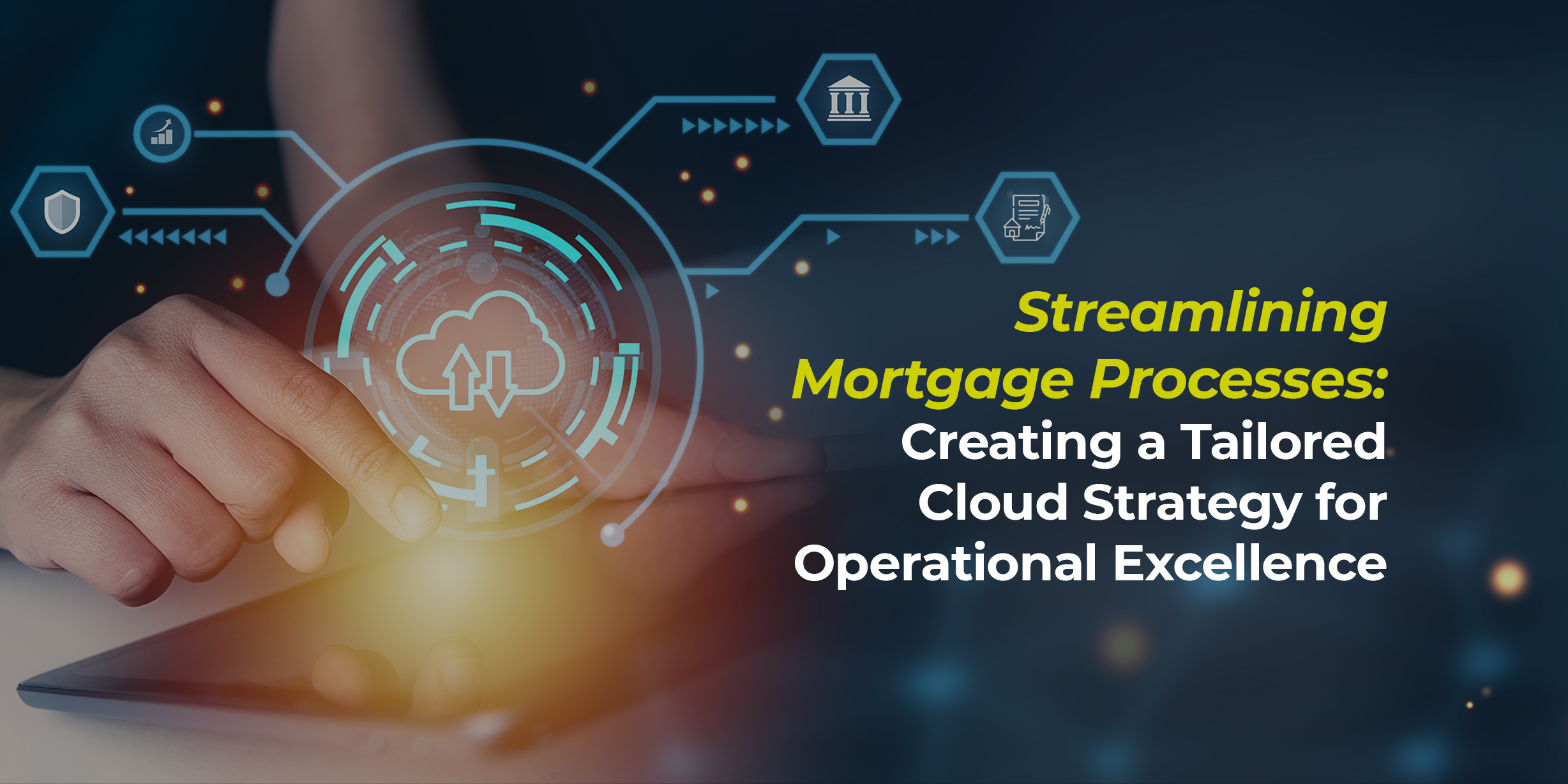Nearly 8 in 10 mortgage lenders are eager to embrace technology so that they are ready to scale when mortgage volumes return to normal. The cloud is an essential part of this strategy.
Investing in the cloud instead of fixed, monolithic hardware gives you the flexibility and agility to ramp up mortgage processes. You do not incur the cost of idle resources, and integrating new technologies is far simpler. Indeed, the newest trends in cloud solutions for mortgage make it an important enabler for operational excellence.
Why a Tailored Cloud Strategy Is Needed for Operational Excellence in 2023
The push toward the cloud was already underway before the pandemic, and it has taken on new momentum in the last two years.
The cloud is a set of remote data centers that a lender rents to host their mortgage processes instead of an on-premise or privately owned server. The cloud provider does not just offer room for data storage. They add value through a host of other tools and enablers, such as cloud configuration engines, resource optimization tools, etc.
In recent years, several large financial institutions have moved to the cloud, and providers, too, have been quick on the uptick.
Companies like AWS, Google, and Microsoft Azure are coming out with cloud offerings that are specifically tailored to help you achieve operational excellence. AWS’ AI-powered Underwriter Assist, Google’s Lending DocAI, and Azure’s recently launched industry cloud platform are designed only for mortgage.
The demand for such solutions is high because the mortgage industry has seen a lot of flux lately. On the one hand, digitally native customers and the rise of fintech companies have forced a different kind of workflow. These low-touch, automated mortgage processes rely on the cloud for seamless data interchange and automated actions.
On the other hand, rising federal rates, inflation, and fluctuating property prices have led to unreliable patterns in origination volumes. The cloud is the only way you can scale your mortgage processes up or down without operational waste.
Read More: How the Mortgage Industry Can Leverage Industry Cloud Platforms
Crafting a Cloud Strategy Optimized for Your Mortgage Processes
A tailored cloud strategy will help your mortgage business unlock anywhere between 20% and 25% in operational cost savings. It will also open up new avenues for integrating artificial intelligence, automation, and data fabrics to unlock further process efficiencies. This involves:
1. Assessing the as-is state
The first step is to analyze your current mortgage processes and develop an as-is report card. This will serve as a benchmark for your future initiatives. How much are you spending now, and how will the cloud help you save? What is your current headcount, and can a tailored cloud strategy reduce it? Without a formal assessment, you will not be able to define and measure operational excellence.
2. Identifying automation candidates
Mortgage process automation and the cloud go hand in hand. This is because remotely hosted processes are easier to configure and integrate, allowing you to set up trigger-event-based workflows. As part of your cloud strategy, identify the repetitive and multi-step mortgage processes that are consuming the lion’s share of your labor costs.
3. Collecting mortgage process data
Collecting data about mortgage technology usage can help you make better decisions about your cloud strategy. This includes performance metrics, user bottlenecks, compliance data, and security benchmarks. Using this information, you can formulate a prioritized cloud implementation strategy that offers the highest possible returns.
4. Selecting the cloud vs. as-a-service
While Software as a Service (SaaS) platforms are also hosted on the cloud, they are not the same as an industry cloud solution. SaaS-based mortgage apps are standalone, off-the-shelf solutions that offer limited integration and customizability. While they may work as point solutions in certain use cases, a tailored cloud strategy is what you need for operational excellence.
5. Preparing for cloud migration
The next step is to work with an offshore outsourcing partner to chalk out the cloud migration plan. Since the mortgage industry deals with legacy systems and historical datasets, there is typically a lot of modernization and transformation involved. A technology partner with mortgage experience will help you transfer mortgage processes to the cloud with little to no business interruptions.
6. Strengthening the cloud infrastructure
Today, companies rarely subscribe to a single, monolithic public cloud provider, which comes with the risk of vendor lock-in. Therefore, a tailored cloud strategy will involve stitching together multiple clouds, integrating with existing servers, and strengthening the infrastructure with best-of-breed solutions. This will ensure operational excellence in the long term, as you are more resilient to technological changes.
Read More: Leveraging Machine Learning in Mortgage Underwriting and Risk Assessment
Streamlining Your Mortgage Processes with Nexval
With time, mortgage processes have become siloed, inefficient, and expensive to maintain. A tailored cloud strategy helps you trim the fat, as it were, and achieve operational excellence even while operating within a budget.
Fortunately, there are plenty of industry-specific and bespoke cloud solutions to choose from. Nexval’s team of 1000+ SMEs is here to help you make the most optimal decisions when adopting the cloud. We develop tailored AI and automation solutions that integrate seamlessly with your mortgage process ecosystem.
Speak with our mortgage tech experts today.



